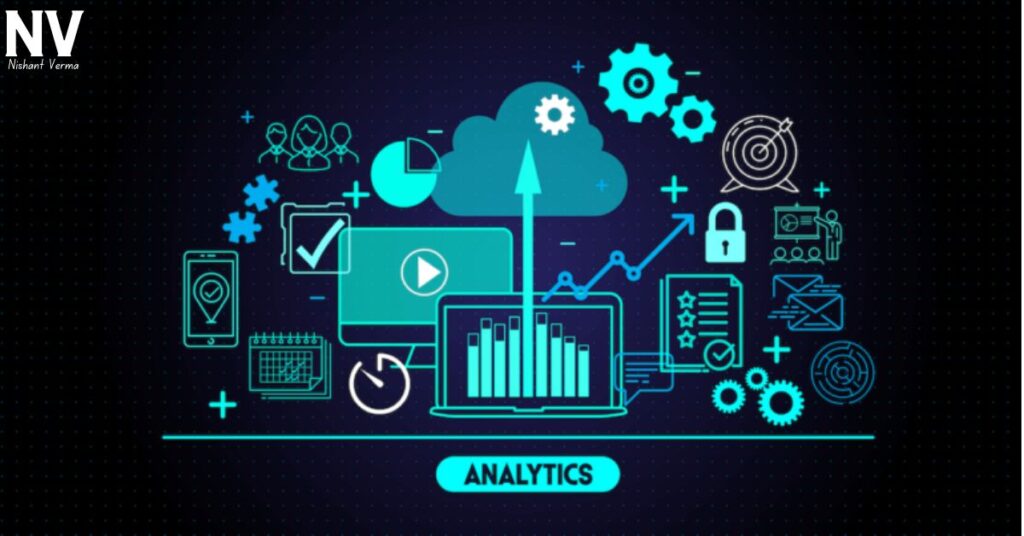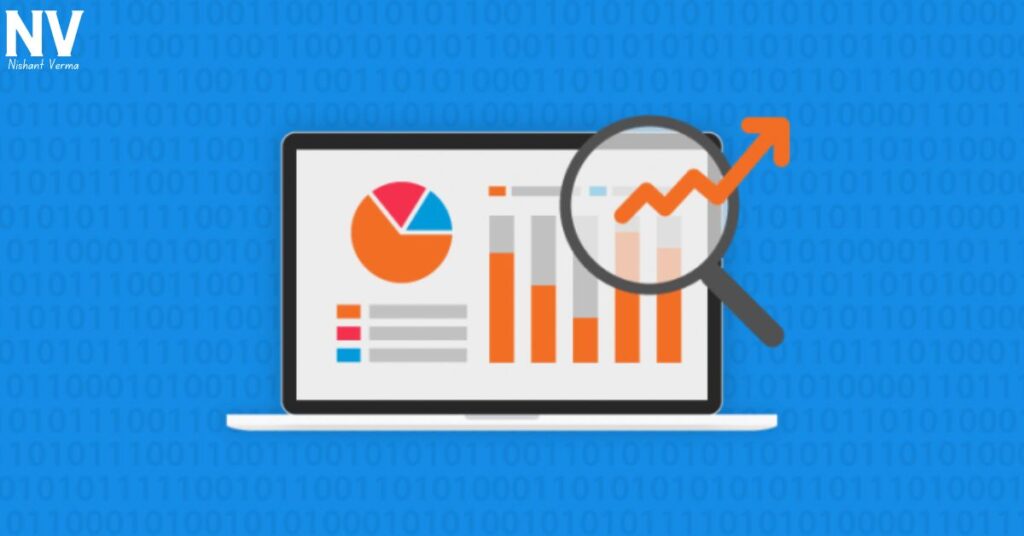In the fast-paced world of sales and marketing, understanding your audience and making informed decisions is crucial. Enter data analytics Unveiled—a powerful tool that transforms raw data into meaningful insights, guiding businesses to more effective strategies. In this article, we’ll demystify data analytics, breaking down complex concepts into easy language and exploring how big or small businesses can leverage data to supercharge their sales and marketing efforts.

Section 1: The Basics of data analytics Unveiled
1.1 What is Data Analytics?
At its core, data analytics is like a detective for your business. It involves examining raw data to conclude, identify patterns, and make informed decisions. Instead of making guesses, businesses use data analytics Unveiled to uncover valuable insights that drive success.
1.2 Types of Data Analytics:
- Descriptive Analytics: Describes what has happened in the past, providing a snapshot of historical data.
- Diagnostic Analytics: Dives deeper to understand why certain events occurred by analyzing patterns and relationships.
- Predictive Analytics: Forecasts future trends and outcomes based on historical data and statistical algorithms.
- Prescriptive Analytics: Recommends actions to optimize outcomes by considering various possible scenarios.
Section 2: Collecting and Organizing Data
2.1 Data Sources:
Data can come from various sources, including customer interactions, website visits, social media, and sales transactions. Businesses collect this data to gain insights into customer behaviour, preferences, and market trends.
2.2 Structured vs. Unstructured Data:
Structured data is organized and follows a specific format (e.g., spreadsheets), while unstructured data lacks a predefined structure (e.g., social media comments). Both types provide valuable information when analyzed.
2.3 Data Cleaning and Preparation:
Before diving into analysis, cleaning and preparing the data is essential. This involves removing errors, handling missing values, and organizing the data in a way that makes sense for analysis.
Section 3: Unveiling Customer Insights
3.1 Customer Segmentation:
data analytics Unveiled helps businesses group customers based on shared characteristics like demographics, behaviour, or preferences. Understanding these segments allows for targeted and personalized marketing strategies.
3.2 Purchase Behavior Analysis:
Businesses can identify popular products, optimal pricing, and the factors influencing buying decisions by analyzing customer purchase patterns. This insight informs inventory management and marketing strategies.
3.3 Lifetime Value Prediction:
Predictive analytics can estimate the potential value of a customer throughout their relationship with a business. This information guides marketing efforts toward acquiring and retaining high-value customers.

Section 4: Enhancing Marketing Strategies
4.1 Targeted Campaigns:
Data analytics enables businesses to create laser-focused marketing campaigns. By understanding customer preferences and behaviour, marketers can tailor messages that resonate with specific audience segments.
4.2 Personalized Content:
Analyzing data allows businesses to personalize content, whether email campaigns, website experiences, or social media interactions. Personalization enhances engagement and builds stronger connections with customers.
4.3 A/B Testing:
data analytics Unveiled supports A/B testing, where businesses compare two versions of a marketing element (e.g., email subject lines or webpage designs). Analyzing the performance data helps determine the most effective approach.
Section 5: Optimizing Sales Processes
5.1 Sales Forecasting:
Predictive analytics aids in forecasting future sales based on historical data and market trends. This allows businesses to anticipate demand, optimize inventory, and allocate resources effectively.
5.2 Lead Scoring:
Data analytics helps prioritize leads by assigning scores based on various criteria, such as engagement level, demographics, or behaviour. Sales teams can focus efforts on leads with higher conversion potential.
5.3 Customer Journey Mapping:
Understanding the customer journey is essential for optimizing sales processes. data analytics Unveiled reveals touchpoints, pain points, and opportunities, enabling businesses to streamline the path from awareness to purchase.
Section 6: Leveraging Social Media Insights
6.1 Social Media Listening:
data analytics Unveiled tools can monitor social media insights platforms for mentions, comments, and sentiments related to a brand. Social media listening provides valuable insights into customer opinions and market trends.
6.2 Engagement Analysis:
By analyzing social media engagement metrics, businesses can assess the effectiveness of their social media efforts. This includes likes, shares, comments, and click-through rates, providing a comprehensive view of audience interactions.
6.3 Influencer Marketing Optimization:
Data analytics helps businesses identify influencers aligned with their target audience. Companies can optimize their influencer marketing strategies by measuring influencer collaborations’ impact for maximum ROI.

Section 7: Implementing Data-Driven Decision-Making
7.1 Real-Time Analytics:
In today’s fast-paced environment, real-time analytics is crucial. Businesses can make informed decisions on the fly by accessing up-to-the-minute data on customer behaviour, market trends, and campaign performance.
7.2 Key Performance Indicators (KPIs):
Define and track KPIs that align with business objectives. Whether it’s conversion rates, customer acquisition costs, or social media engagement, KPIs provide measurable benchmarks for success.
7.3 Dashboards and Data Visualization:
Visualizing data through dashboards and charts makes complex information easily digestible. User-friendly interfaces allow decision-makers to grasp trends, patterns, and insights at a glance.
Section 8: Overcoming Data Challenges
8.1 Data Security and Privacy:
Protecting customer data is paramount. Implement robust security measures to ensure data security and privacy and compliance with regulations. Customer trust is built on the assurance that their information is handled securely.
8.2 Integration of Data Sources:
Many businesses use multiple tools and platforms that generate data. Integrating these sources ensures a holistic view of information, preventing data silos and providing a comprehensive understanding.
8.3 Skill Gap:
The field of data analytics Unveiled requires specific skills. Investing in training or hiring professionals with expertise in data analysis tools and techniques ensures businesses can unlock the full potential of their data.
Section 9: Case Studies and Success Stories
9.1 Netflix’s Content Recommendation Algorithm:
Explore how Netflix utilizes data analytics to recommend content based on user preferences. The streaming giant’s success lies in its ability to analyze viewing history, preferences, and user behaviour to provide personalized recommendations.
9.2 Amazon’s Dynamic Pricing Strategy:
Amazon’s dynamic pricing strategy adjusts product prices in real-time based on factors like demand, competitor pricing, and customer behaviour. This data-driven approach allows Amazon to stay competitive and maximize revenue.
9.3 Spotify’s Personalized Playlists:
Spotify leverages data analytics Unveiled to curate personalized playlists for users. By analyzing listening habits, favourite genres, and mood preferences, Spotify enhances user experience and keeps customers engaged.
Conclusion:
Data analytics is a game-changer for businesses seeking to elevate their sales and marketing strategies. Companies can gain a competitive edge in today’s dynamic landscape by unravelling customer insights, optimizing processes, and making informed decisions. Whether you’re a small business or a large enterprise, harnessing the power of data analytics Unveiled opens doors to endless possibilities. It’s not just about numbers; it’s about understanding your audience, adapting strategies, and steering your business toward lasting success.




